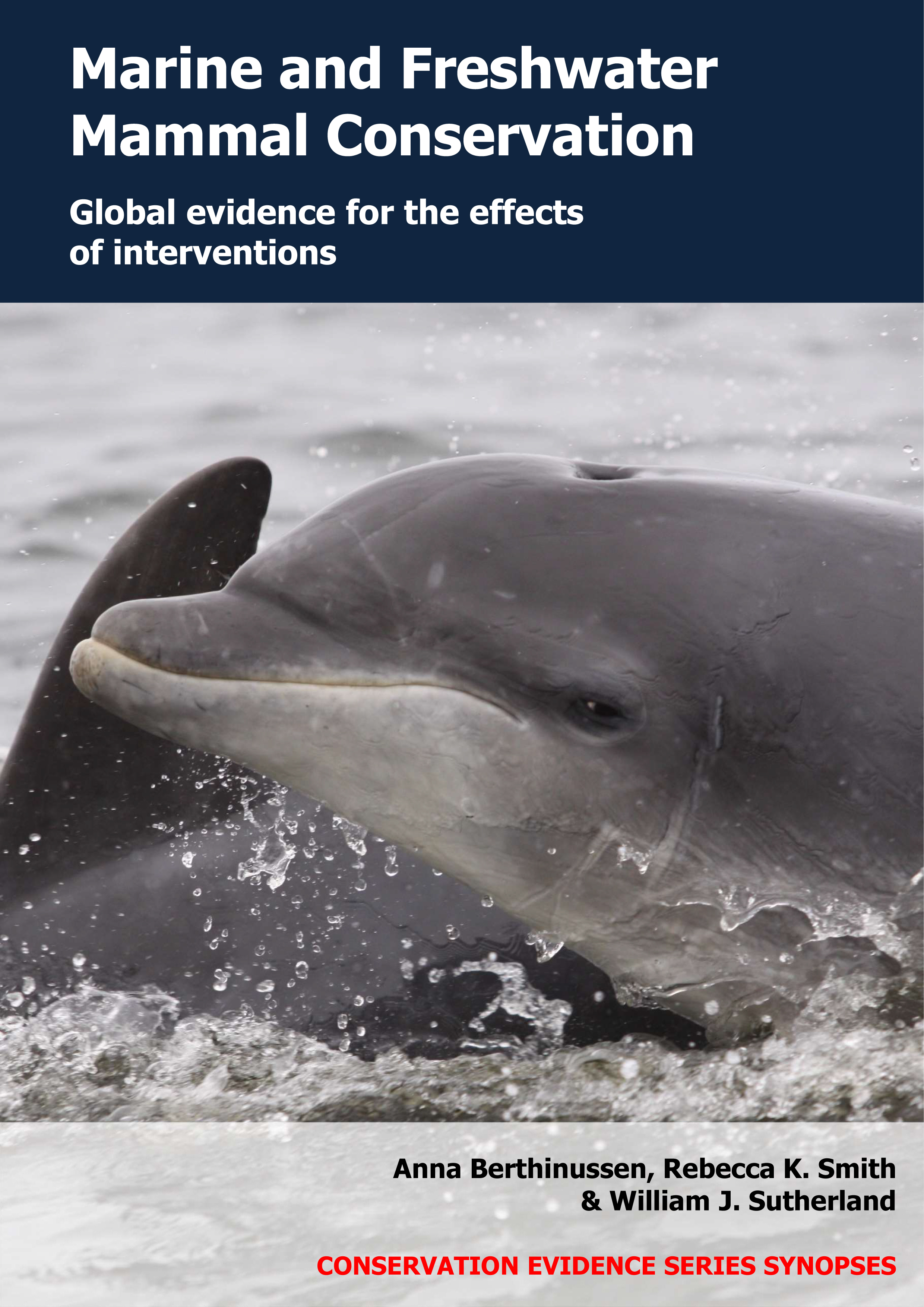Educate the public to improve behaviour towards marine and freshwater mammals
-
Overall effectiveness category Likely to be beneficial
-
Number of studies: 3
View assessment score
Hide assessment score
How is the evidence assessed?
-
Effectiveness
60% -
Certainty
40% -
Harms
0%
Study locations
Supporting evidence from individual studies
A before-and-after study in 2011 of whale-watching tours in the North Atlantic Ocean, off the coast of Massachusetts, USA (Harms et al. 2013) found that after educational tours, 40 of 544 (7%) participants were more willing to change their behaviour to support marine conservation than before the tours. After the tours, 40 of 544 participants (7%) stated that they were more willing to change their behaviour to protect the marine environment and/or contribute money to support marine conservation than before the tours. A total of 486 participants (89%) stated that their willingness to change their behaviour had not changed, and 18 participants (3%) were less willing to change their behaviour. A total of 544 tourists completed questionnaires before and after whale-watching tours in June–August 2011. Two tour operators conducted the tours, each with 1–2 vessels running 2–3 trips/day. Three statements in the questionnaire assessed behavioural intentions (actual behavioural change was not assessed).
Study and other actions testedA before-and-after study in 2011–2013 of 12 villages near the Sundarbans mangroves, Bangladesh (Mansur et al. 2014) reported that after an educational exhibition, the number of fishers willing to cut their fishing nets to save entangled freshwater dolphins increased. Results are not based on assessments of statistical significance. After the exhibition, 98% of fishers stated that they were willing to cut their nets to save entangled dolphins, compared to 83% before the exhibition. A month-long boat-based educational exhibition visited villages adjacent to three sanctuaries for Ganges River dolphins Platanista gangetica and Irrawaddy dolphins Orcaella brevirostris. Trained interpreters guided visitors through the exhibition comprising informative panels, interactive displays and educational films about dolphins. In 2011–2013, yearly interviews were conducted in 12 villages visited by the exhibition 1–3 times (total 603 participants).
Study and other actions testedA before-and-after study in 2014 of whale-watching tours in the South Pacific Ocean, off the coast of northern Peru (García-Cegarra et al. 2017) found that after educational tours, a greater number of participants were willing to change their behaviour towards the marine environment or donate money for marine conservation than before the tours. After the tours, a greater number of 196 participants were willing to change their behaviour to protect the marine environment (130 participants) than before the tours (114 participants). The same was true for the number of participants willing to donate money to support marine conservation (before: 42 participants; after: 54 participants). A total of 196 tourists completed questionnaires before and after educational whale-watching tours lasting an average of 3 h in August–September 2014. Three boats (each with a capacity of 20 people) operated the tours targeting humpback whales Megaptera novaeangliae. Two of 10 statements in the questionnaire assessed behavioural intentions (actual behavioural change was not assessed).
Study and other actions tested
Where has this evidence come from?
List of journals searched by synopsis
All the journals searched for all synopses
This Action forms part of the Action Synopsis:
Marine and Freshwater Mammal Conservation
Marine and Freshwater Mammal Conservation - Published 2021
Marine and Freshwater Mammal Synopsis





)_2023.JPG)














